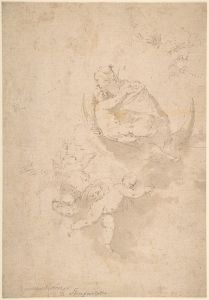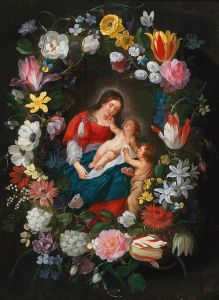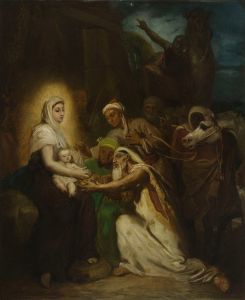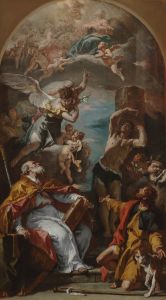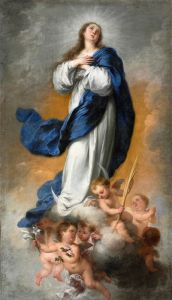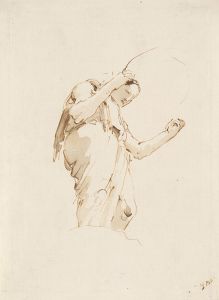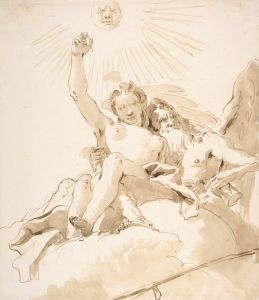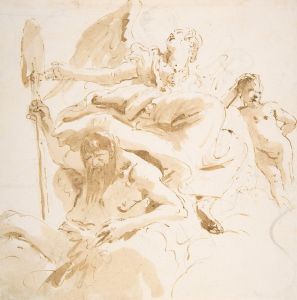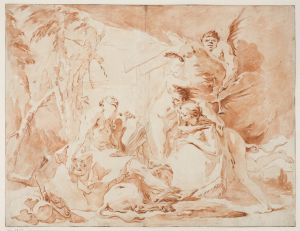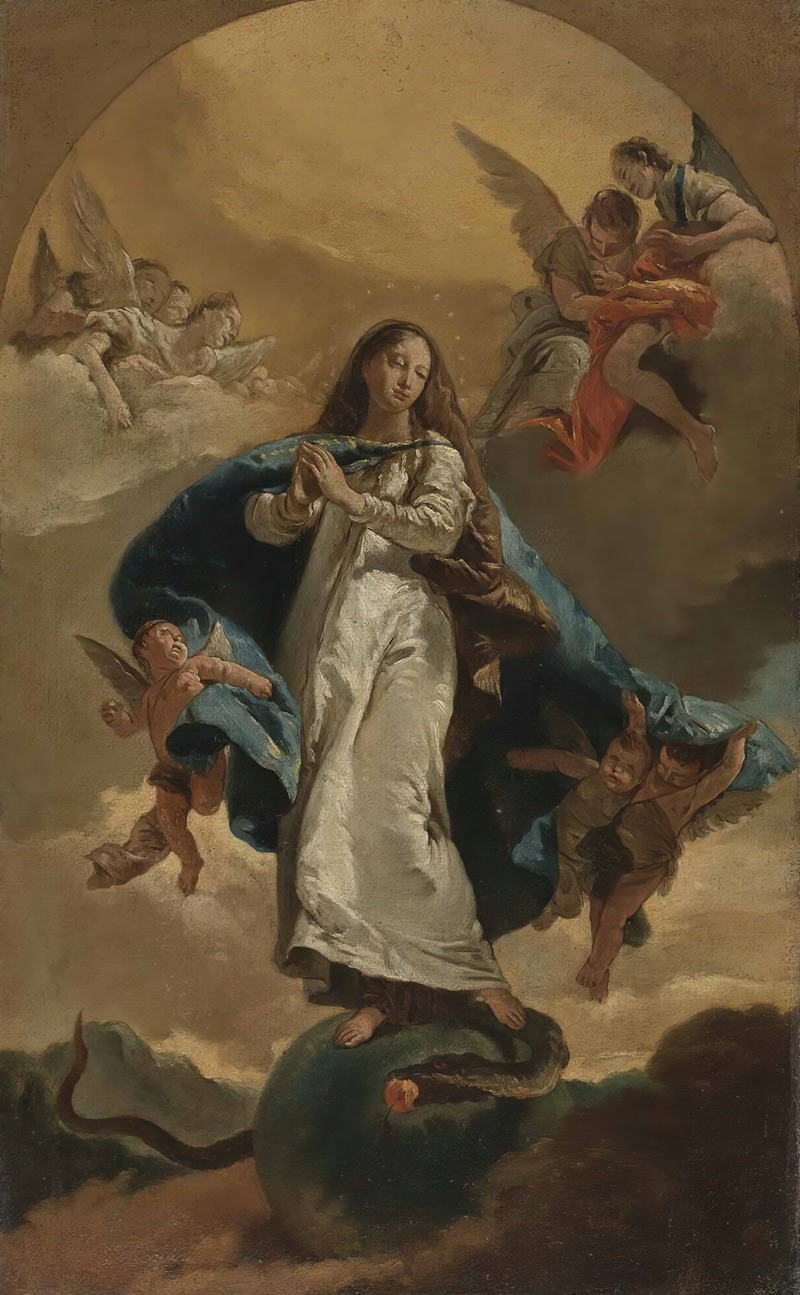
The Immaculate Conception
A hand-painted replica of Giovanni Battista Tiepolo’s masterpiece The Immaculate Conception, meticulously crafted by professional artists to capture the true essence of the original. Each piece is created with museum-quality canvas and rare mineral pigments, carefully painted by experienced artists with delicate brushstrokes and rich, layered colors to perfectly recreate the texture of the original artwork. Unlike machine-printed reproductions, this hand-painted version brings the painting to life, infused with the artist’s emotions and skill in every stroke. Whether for personal collection or home decoration, it instantly elevates the artistic atmosphere of any space.
Giovanni Battista Tiepolo's "The Immaculate Conception" is a notable example of 18th-century Italian religious art, reflecting both the artist's mastery of the Rococo style and the theological significance of the subject matter. Tiepolo, born in Venice in 1696, was one of the most prominent painters of his time, known for his grand frescoes and vibrant use of color. His work often depicted religious and mythological themes, characterized by dramatic compositions and a light, airy palette.
"The Immaculate Conception" is a depiction of the Virgin Mary, a subject that holds significant importance in Catholic doctrine. The Immaculate Conception refers to the belief that Mary was conceived without original sin, a dogma that was officially defined by Pope Pius IX in 1854, although it had been a subject of theological discussion for centuries prior. Tiepolo's painting predates this formal declaration, indicating the longstanding veneration of this belief within the Church.
In this artwork, Tiepolo portrays the Virgin Mary as a young woman, often shown in a state of serene grace and divine purity. She is typically depicted standing on a crescent moon, a symbol derived from the Book of Revelation, and surrounded by cherubs or angels, emphasizing her heavenly status. The use of light and color in the painting is particularly noteworthy, as Tiepolo employs a soft, luminous palette to convey the ethereal and divine nature of the subject. The composition often includes clouds and a radiant sky, further enhancing the celestial atmosphere.
Tiepolo's ability to convey movement and emotion through his brushwork is evident in "The Immaculate Conception." The figures are dynamic, with flowing drapery and expressive gestures that guide the viewer's eye throughout the composition. This sense of movement, combined with the delicate interplay of light and shadow, creates a sense of depth and three-dimensionality, drawing the viewer into the scene.
The painting reflects the Rococo style's emphasis on elegance, lightness, and decorative qualities. Tiepolo's work is characterized by its graceful lines and harmonious compositions, which are evident in this piece. His skillful use of perspective and foreshortening adds to the illusion of space, making the figures appear to float effortlessly within the heavenly realm.
"The Immaculate Conception" by Tiepolo is housed in various collections, with several versions and interpretations attributed to the artist. Each version showcases Tiepolo's consistent approach to the subject, while also highlighting his ability to adapt and refine his compositions. The painting remains a testament to Tiepolo's artistic genius and his contribution to religious art during the 18th century.
Overall, Giovanni Battista Tiepolo's "The Immaculate Conception" is a masterful representation of a central theme in Catholic theology, executed with the artist's characteristic flair and technical skill. It stands as a significant work within Tiepolo's oeuvre and continues to be admired for its beauty and spiritual resonance.






